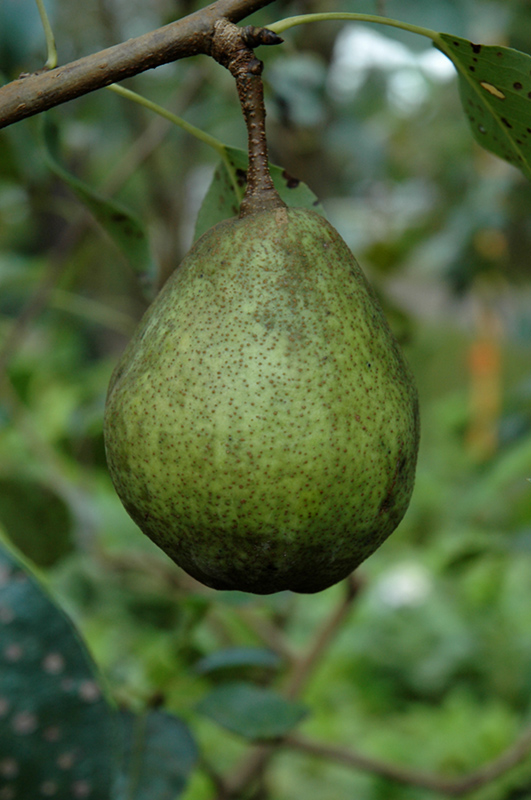Height: 20 feet
Spread: 20 feet
Sunlight:
![]()
Hardiness Zone: 4a
Other Names: Common Pear
Description:
A compact and hardy pear that produces tasty golden-yellow fruit in late summer on an upright and vigorous tree; showy white flowers in spring; a great choice for the home orchard; highly disease resistant
Edible Qualities
Kieffer Pear is a small tree that is typically grown for its edible qualities. It produces gold oblong pears (which are botanically known as 'pomes') with hints of chartreuse and white flesh which are usually ready for picking from early to mid fall. The pears have a sweet taste and a crisp texture.
The pears are most often used in the following ways:
- Fresh Eating
- Cooking
- Baking
- Canning
Features & Attributes
Kieffer Pear is blanketed in stunning clusters of white flowers with purple anthers along the branches in mid spring. It has dark green deciduous foliage. The glossy pointy leaves turn an outstanding coppery-bronze in the fall. The fruits are showy gold pears with hints of chartreuse, which are carried in abundance from early to mid fall.
This is a dense deciduous tree with an upright spreading habit of growth. Its average texture blends into the landscape, but can be balanced by one or two finer or coarser trees or shrubs for an effective composition. This is a high maintenance plant that will require regular care and upkeep, and is best pruned in late winter once the threat of extreme cold has passed. Gardeners should be aware of the following characteristic(s) that may warrant special consideration;
- Messy
Aside from its primary use as an edible, Kieffer Pear is sutiable for the following landscape applications;
- Accent
- Orchard/Edible Landscaping
Planting & Growing
Kieffer Pear will grow to be about 20 feet tall at maturity, with a spread of 20 feet. It has a low canopy with a typical clearance of 3 feet from the ground, and is suitable for planting under power lines. It grows at a fast rate, and under ideal conditions can be expected to live for 50 years or more. This variety requires a different selection of the same species growing nearby in order to set fruit.
This tree is typically grown in a designated area of the yard because of its mature size and spread. It should only be grown in full sunlight. It does best in average to evenly moist conditions, but will not tolerate standing water. It may require supplemental watering during periods of drought or extended heat. It is not particular as to soil type or pH. It is highly tolerant of urban pollution and will even thrive in inner city environments. This particular variety is an interspecific hybrid.

